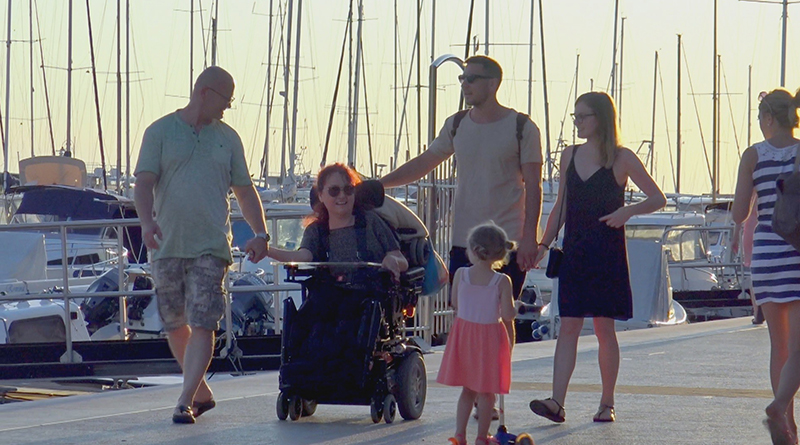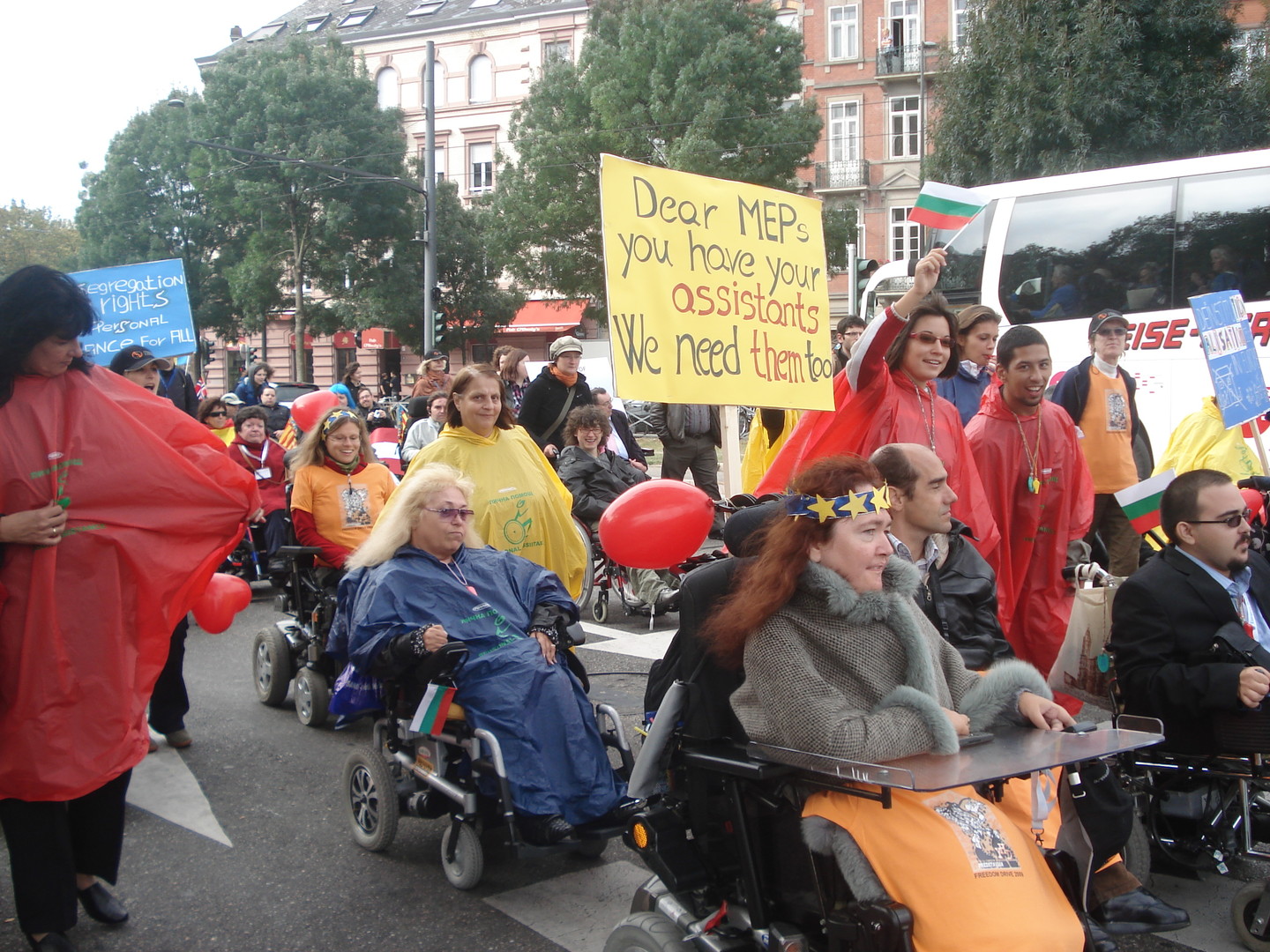I Live

Directed by: Rok Matic | Reviewed by: Sabarno Sinha
Rok Matic’s 2020 Slovenian documentary film “I Live” is perhaps one of the most emotional and enlivening documentaries on the life and struggle of a differently abled woman.
The very profound and poignant tone of the film is elicited from the very first sequence of handheld close-up shots in which Matic shows the electronic wheelchair which supports and sustains the life of the protagonist, Martina Piskac, a woman who was born with muscular dystrophy and therefore, could never use her limbs in all her life.
The film is divided into three segments- the childhood, the youth and the present day. In all these three segments, Matic has interspersed recollections of people in the current time with footage and photographs of the earlier days in a reasonable balance that has ensured that the audience is connected with the story at all times. Besides, Matic and Martina have taken a very intimate approach in this documentary for the camera never rests as a fly on the wall observing everything. Instead, it takes part in very emotional moments and sometimes, we find Martina confessing some of her feelings in front of the camera which very sweetly binds the audience with the heart of the protagonist. It also gives greater insight into the personal and emotional space of the protagonist.
Even though Slovenians have a great sensitivity towards the differently-abled, mismanagement of funds has always been a problem as institutions have been underpaid and so have their staff. As a result, women like Martina had to suffer at the hands of the negligent authorities who would often exploit their helpless situation to shirk off their duties to these children. Martina recounts her youthful days with more glee as she had more freedom then, many friends and went to a normal school. However, her primary education had been inadequate due to which she had to work extra in order to get good grades. Even though Matic has carefully used the monologues of Martina’s friends in this sequence, there are some shots which are drawn far too long and could have been interspersed with photographs or footages instead of a creating montage later. Sometimes the transitions to these are awkward which causes a disruption in the flow of the narration.

The sequence youth is the longest perhaps due to the conglomeration of two different but related parts- Martina’s time at school and her experiences with her first boyfriend-turned-husband, Uros. In spite of gynaecological issues, Martina could conceive a daughter with him and this was surely one of those moments in life when she wanted to live more than ever. Uros’ was heavily criticised by many of his friends and family members for his sacrifice, he decision to care for and love a specially abled woman. However, against all odds, Martina and Uros continued their romance and strove to ensure that their child, Tina had a normal life. The ample footage in this section of the film, of Tina’s growth and Martina’s unique motherhood is a touching reflection on the many prejudices that are prevalent even in developed societies.
In the final segment of the film, concerning the present day, Matic shows us Martina’s fierce struggle for independence and her compassionate nature which forced her to rally for the rights of the disabled alongside her friends and acquaintances. A hired help may seem quite normal in Indian society but it is far from true in theirs. Uros himself was opposed to the idea but for Martina, the assistant was to become and indeed did, turn into her extended hands. Whatever she wanted to do, her assistant helped her with it all.
After Martina was made a part of FIHO, the fund-distribution agency for all disabled homes, she realised how there were so many irregularities in the distribution process. When she raised her voice, she was dragged out by the security. It is in this moment that Martina’s will to live became stronger than ever. She protested in 1996 in front of the Parliament and every year before fund distribution. She represented their concerns in front of the European Parliament and it was finally in 2019 that special legislation was passed for them. She also founded the Equal Opportunities Party of Slovenia to coalesce with all people who had suffered a terrible childhood and wanted to prevent it for others.

By the end of the film, we realise that Martina lived a life much like everybody else and this was solely on account of her loving family. The addition of her son-in-law and grandson only brought her further happiness. Even though many common illnesses are fatal for her, Martina loves life and wants to live every day. She says that her will is more powerful than anyone else for she is aware that she may die any moment.
Thus, life never ends for Martina. One after the other, she finds renewed purpose every day for living. Be it her grandson or her husband or her children or her friends or the specially-abled children, Martina wants to live for them, to fight for them and to die the death of one who loved and was always loved. This quality of this brave woman is reflected in the music throughout the film. Matic’s scores blend very well with each of the segments and they bring out the poignancy of the film along with the spright and courage of this one woman whose story perhaps would be left unseen had I watched this film.
“I Live” is a boisterous salute to life and what it means to live.
 Sabarno Sinha is an undergraduate student of English at Jadavpur University, Kolkata. He was active in the debating and MUN circuit in Kolkata. Sabarno frequently writes short stories, poems and screenplays for short films. A lover of world cinema, Sabarno finds pleasure in watching contemporary as well as classic films from Japan, Italy and Germany among others.
Sabarno Sinha is an undergraduate student of English at Jadavpur University, Kolkata. He was active in the debating and MUN circuit in Kolkata. Sabarno frequently writes short stories, poems and screenplays for short films. A lover of world cinema, Sabarno finds pleasure in watching contemporary as well as classic films from Japan, Italy and Germany among others.


